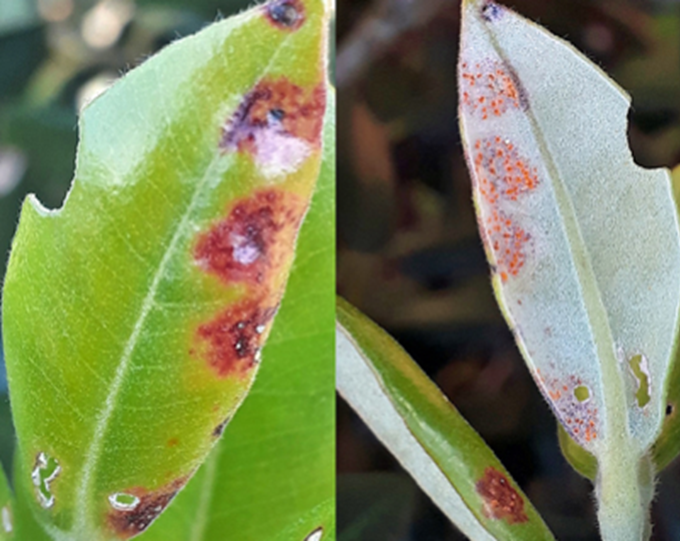The fungal disease Myrtle Rust has been discovered for the first time within the boundaries of the Waitākere Ranges Regional Park, infecting one of New Zealand’s most highly susceptible native myrtles, Lophomyrtus bullata, commonly known as ramarama.
The species is nationally threatened, and its conservation status is classified as “critical”.
The Department of Conservation is leading the threatened plant recovery response to Myrtle Rust.
Myrtle rust can infect hundreds of species in the plant family Myrtaceae, which in New Zealand includes mānuka, pōhutukawa, rātā and kānuka. Once established on a host tree or shrub, it destroys new growth and soft tissues, in some cases, eventually killing the plant. To date, pōhutukawa has not been badly affected in the Auckland region.
The disease arrived in New Zealand in 2017 and has now been found across most of the North Island and localised areas of the upper South Island.
“This fungus is wind-borne and the discovery in the Waitākere Ranges Regional Park was not a matter of if, but when”, says Councillor Richard Hills.
“Despite the inevitability, this will be distressing for many of our communities who are concerned that our native taonga could be affected.
“A huge thank you to the wider community for being so vigilant in their reporting of Myrtle Rust on the official Myrtle Rust Reporting channel, iNaturalist,” he adds.
Auckland Council’s Environmental Services and Regional Parks teams are assessing the site to implement an appropriate management response.
“That may include removing the infected plants to protect other plants or we may decide on taking no further action,” says Natural Environment Delivery Manager, Phil Brown.

What to do if you think you see Myrtle Rust:
- don’t touch the plant or come into close contact where you may inadvertently transfer the rust to your clothing or gear
- take an image of the plant, including infected leaves, or other areas of the plant and a close-up of the spores.
- submit your images to the iNaturalist website- experts will confirm the infection
For more information visit the Auckland Council website or contact biosecurity@aucklandcouncil.govt.nz


